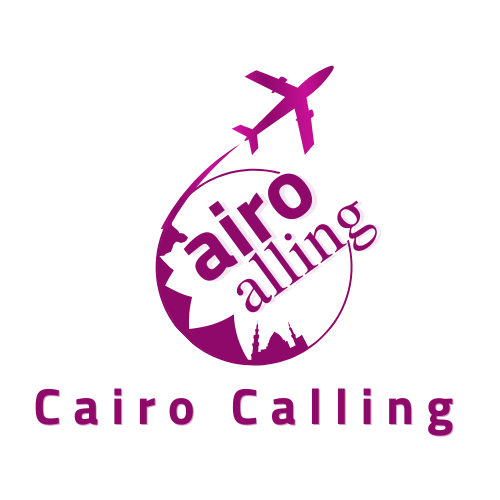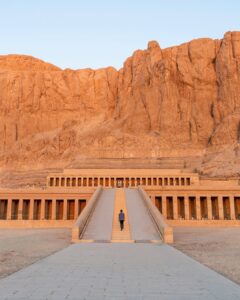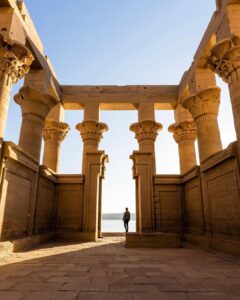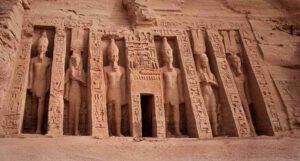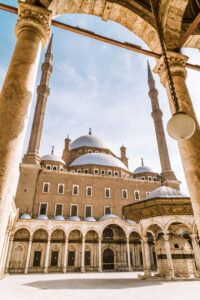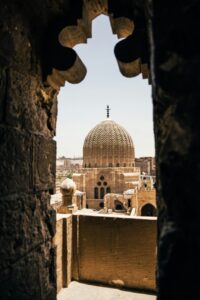Historical Background
Constructed in the late 15th century, the Citadel of Qaitbay was commissioned by Sultan Al-Ashraf Sayf al-Din Qa’it Bay, the Mamluk Sultan of Egypt, to fortify the city against potential invasions from the sea. It replaced the legendary Lighthouse of Alexandria, one of the Seven Wonders of the Ancient World, which had been severely damaged by earthquakes.
Construction and Architecture
The fortress was built using the remains of the ancient Pharos Lighthouse and other materials scavenged from nearby ancient sites. Its architecture reflects a blend of Mamluk, Ottoman, and European styles, characterized by sturdy stone walls, imposing towers, and intricate decorative elements.
Strategic Location
Perched on the eastern point of Pharos Island, the Citadel of Qaitbay commands sweeping views of the Mediterranean Sea, making it an ideal defensive stronghold. Its strategic location allowed it to control maritime traffic and protect the city from naval attacks.
Significance in Egyptian History
Throughout its history, the Citadel of Qaitbay played a crucial role in safeguarding Alexandria and its inhabitants. It witnessed numerous historical events, including battles, sieges, and political upheavals, shaping the course of Egyptian history.
Restoration Efforts
Over the centuries, the Citadel of Qaitbay has undergone several renovations and restoration projects to preserve its architectural integrity and historical significance. Today, it stands as a well-maintained heritage site, attracting visitors from around the world.
Visitor Information
Visitors to the Citadel of Qaitbay can explore its various chambers, halls, and towers, offering panoramic views of the surrounding landscape and the sea. Guided tours are available, providing insights into the fortress’s history and significance.
Nearby Attractions
Adjacent to the Citadel is the picturesque Eastern Harbor of Alexandria, home to vibrant cafes, restaurants, and shops. Visitors can also explore other nearby attractions, such as the Bibliotheca Alexandrina and the Montazah Palace Gardens.
Conclusion
In conclusion, the Citadel of Qaitbay stands as a timeless symbol of Alexandria’s rich cultural heritage and maritime legacy. Its imposing presence, coupled with its historical significance, makes it a must-visit destination for history enthusiasts and travelers alike.
FAQs about the Citadel of Qaitbay
What are the opening hours of the Citadel of Qaitbay? The Citadel is typically open to visitors from [ open daily from 9 am to 5 pm ].
How much time should I allocate for a visit to the Citadel? A visit to the Citadel of Qaitbay usually takes around [2 hours] to explore thoroughly.
Are guided tours available at the Citadel? Yes, guided tours are available at the Citadel of Qaitbay, offering insights into its history and architecture.
Is photography allowed inside the Citadel? Yes, visitors are allowed to take photographs inside the Citadel of Qaitbay for personal use.
Are there any entry fees for visiting the Citadel? Yes, there is an entry fee for visiting the Citadel of Qaitbay.
Adults 150 EGP, students 75 EGP






